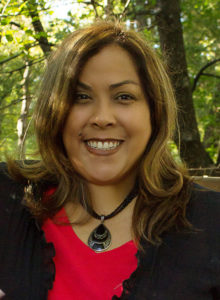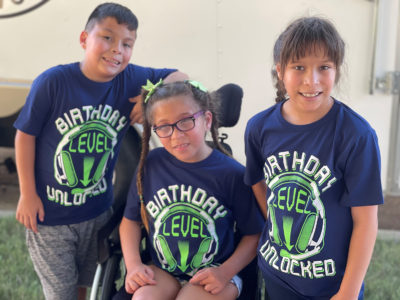By Lizdelia Piñón, Ed.D. • IDRA Newsletter • November-December 2022 • 

My children Felicita, Frida, and Santiago did not have a bilingual teacher for over six months in second grade. Instead, they had a series of unqualified substitutes coming and going during this important academic year.

One in every five students who walk through the doors of a public school in the state of Texas is an emergent bilingual student. Yet, for over three decades, Texas has had a crisis situation in the shortage of bilingual educators that has impacted generations of students.
This problem is not limited to Texas. Schools across the country continue to have difficulty filling some very critical teaching positions, sadly with the majority of these being in high-poverty schools that primarily serve emergent bilingual students. Foreign language and bilingual/ESL are consistently among the subject areas with the highest percentage of substitute teachers (Horn, et al., 2021). Unfortunately, the effects of COVID-19 made matters even worse for the bilingual education teaching profession.
In September of 2022, the Texas House Public Education and Higher Education Committees examined the issue of teacher shortages in public schools. The committees invited me to provide expert testimony (Piñón, 2022). Below, I share some of the strategies I presented in my testimony that school and district leaders can use to co-create an inclusive, multilingual, equipped and sustainable workforce of educators.
Well-qualified public school educators are key to students’ academic success, emotional and physical well-being and social development. A strong workforce of bilingual/ESL educators is essential to student success and thriving communities.
Create a Classroom-Student-to-Classroom-Teacher Pathway
Educators should encourage students who are bilingual to become bilingual teachers. Districts can establish Grow Your Own educator programs to build strong, stable, and diverse teacher pipelines from within their own communities based on school district-specific teacher workforce needs. (See IDRA’s Grow Your Own Educator Programs – Online Technical Assistance Toolkit.)
We need to celebrate students who are bilingual or multilingual as they have profound language at the moment skills with languages from the time they enter U.S. schools. As early as elementary school, educators can encourage bilingual students to participate in clubs, such as Future Bilingual Teacher Club, or Spanish, Vietnamese, Portuguese, etc., clubs. Schools can continue their support of bilingual students by helping them earn biliteracy seals in their graduation plans.
Create Collaborative Partnerships Between School Districts and Higher Education
School districts need to collaborate with designated Hispanic Serving Institutions (HSIs) and take advantage of their current students who are bilingual. Such collaborations can encourage the widespread and targeted placement of bilingual education preservice teachers. States should provide financial assistance to bilingual/ESL teacher candidates and fund resource centers that will help them achieve success in education.
Leaders can draw on a number of strategies from IDRA’s previous projects that partnered with more than 55 school districts and with universities to prepare skilled, effective teachers in key teacher shortage areas of math, science, bilingual/ESL and special education fields. Through six multi-year Transition to Teaching grants, funded by the U.S. Department of Education, IDRA recruited over 800 recent graduates and mid-career professionals who were working in fields other than teaching. These new teachers participated in university coursework and intense professional development while in a first-year paid teaching internship. (IDRA, 2018)
Use Varied Modes of Recruitment
Local and national professional organizations serving bilingual educators are valuable recruitment venues. Schools can take advantage of high school summer academies, college nights and collaborative programs to recruit future bilingual/ESL teachers. Following recruitment and retention best practices, states can be supportive by providing more specific recruitment guidance, technical support and financial assistance.
Remove Barriers
There are many barriers that need to be removed to allow student teachers, current teachers and retired teachers to become bilingual educators. Required state exams may be a financial burden for many, thereby establishing a barrier for bilingual teacher recruitment.
Currently, Texas and other states have restrictions that serve as barriers for retired teachers who wish to return to the classroom. These states should remove these restrictions so that excellent retired educators, who are retired in good standing and are certified in bilingual education. Removing such restrictions provides an easier path for many to return to the classroom and support the development of other bilingual educators.
Emergent bilingual learners are better served by having access to high-quality bilingual educators who are fluent in the students’ native language. Well-qualified public school educators are key to students’ academic success, emotional and physical well-being and social development. A strong workforce of bilingual/ESL educators is essential to student success and thriving communities.
Resources
Horn, C., Burnett, C., Lowery, S., & White, C. (2021). Texas Teacher Workforce Report. University of Houston College of Education.
IDRA. (2018). IDRA Transition to Teaching Program: 15-Year Synthesis October 1, 2001 – September 30, 2017. IDRA.
IDRA. (2017). Grow Your Own Educator Programs – Online Technical Assistance Toolkit.
Piñón, L. (2022). Testimony Resources: Bilingual Teacher Shortage. IDRA. https://padlet.com/lizdeliapinon/BilingualTeacherShortage
Lizdelia Piñón, Ed.D., is an IDRA education associate. Comments and questions may be directed to her via email at lizdelia.pinon@idra.org.
[©2022, IDRA. This article originally appeared in the November-December 2022 issue of the IDRA Newsletter by the Intercultural Development Research Association. Permission to reproduce this article is granted provided the article is reprinted in its entirety and proper credit is given to IDRA and the author.]


